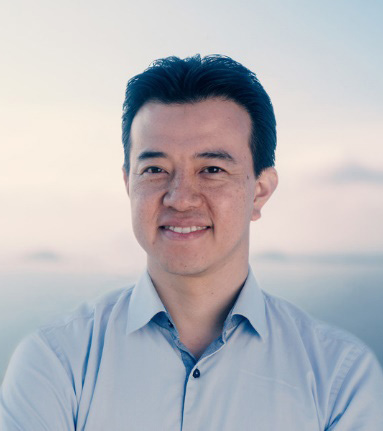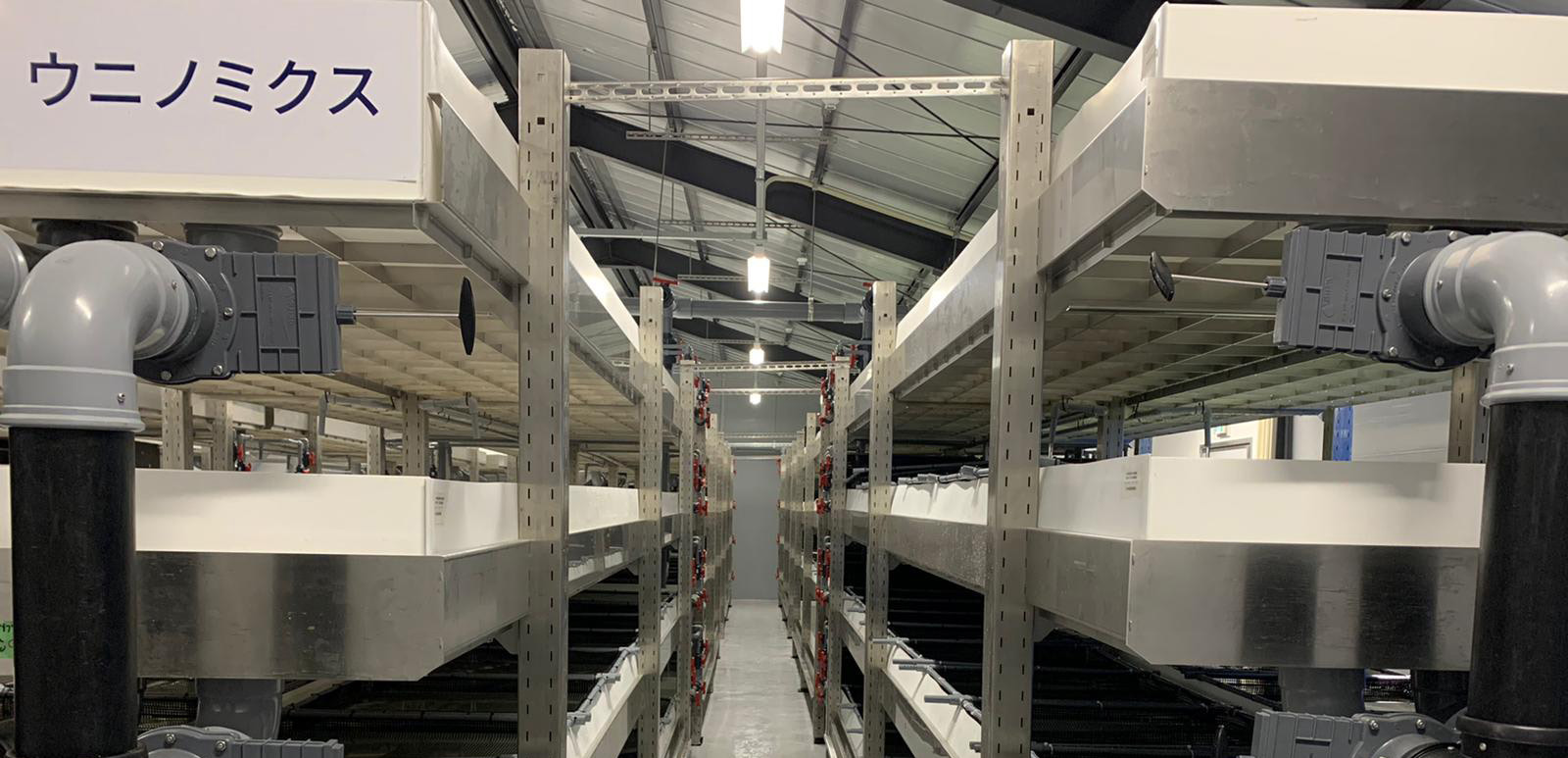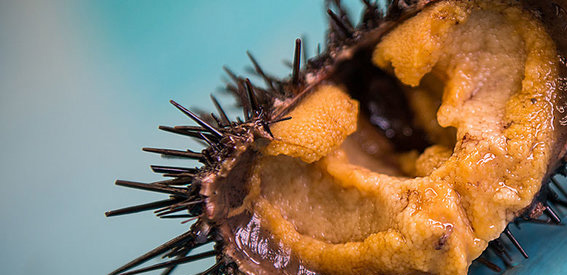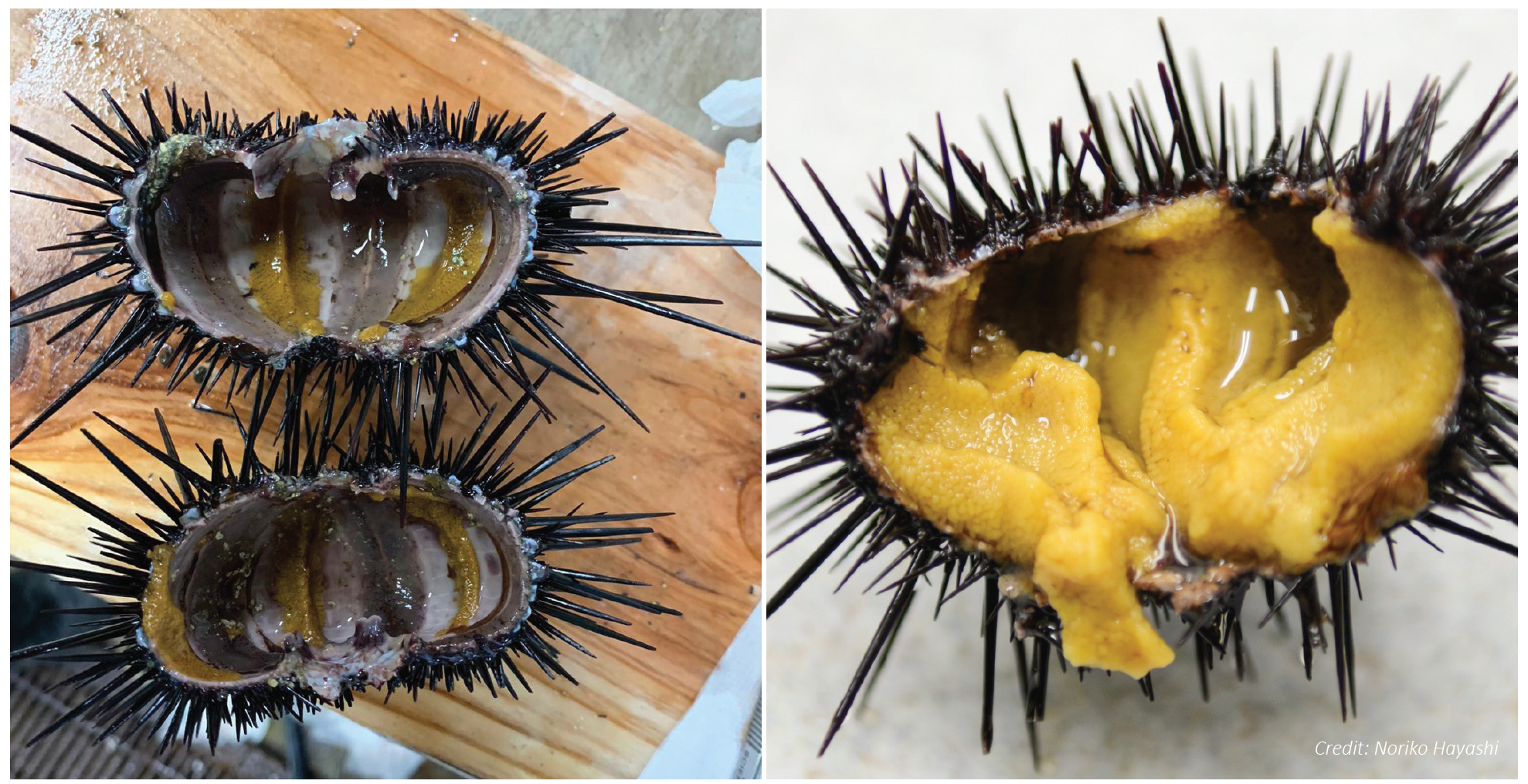Industry Profile: BRIAN TSUYOSHI TAKEDA

BRIAN TSUYOSHI TAKEDA
It was when I learned about this underlying challenge that I thought “wait a minute… Norway has so much aquaculture technologies… there has to be a way to leverage this knowhow and apply it to the urchins.” So, we reached out to the government scientists and licensed some of their cutting edge technologies to see if we could use it to commercialise the urchins and help restore the kelp forests.
Our first trial...in 2014 went really well… almost too well… so we tried again in 2015 and it really showed promise. So much so that the Fisheries Minister of Norway visited our site in Japan to see with her own eyes! It was throughout these trials and interactions with scientists around the world that helped us understand that kelp forest lost due to urchin overgrazing was not just a Japan issue, but a global issue. We then decided to establish Urchinomics as a commercial venture in December 2016.
Q: We know that kelp forests have a vital role in providing food and shelter to marine species as well as in atmospheric carbon sequestration and oxygenating the oceans. Their massive decrease in countries like Japan, Norway, Canada, Australia, and the US, has been blamed on millions of hungry urchins, notwithstanding the warming of the seas due to climate change. Apart from reducing sea urchin populations at these barrens, what else could be done together with other stakeholders to regenerate kelp forests? And can you cite some success stories where forests have been successfully rehabilitated?
A: When it comes to restoring kelp forests, the science is pretty clear that, if the barrens are caused by urchins, removing the urchins will allow the kelp forests to bounce back. So for most regions around the world, reducing the urchin population levels down to around two urchins per square meter will do the trick. For those areas that have lost their “spore banks” or, in other words, lost so much of their kelp that there aren’t any left to release spores and repopulate areas, then we will likely need to transplant kelp from other regions. We also see restocking urchin predators as a novel way to rebalance the ecosystem. There is great research being done in Washington state and in Norway to restock predators to help keep urchin populations in check. As we scale up our ranching operations, we would like to collaborate with such initiatives so that we can accelerate kelp restoration.
Q: In terms of species, your focus seems to be primarily purple sea urchins. Does the company have plans to ranch other commercially important species such as, for instance, the red species which was once abundant in the waters off California?
A: Actually, our focus is primarily purple sea urchins in California, but we work with many other species around the world. For instance, in British Columbia, the sea urchin barrens are generally caused by an overabundance of red sea urchins. We have conducted validation trials in partnership with the Department of Fisheries and Oceans in British Columbia to see if our technologies can commercialise barren red urchins, and the result was a resounding yes.
Now, just because we can do it though, does not mean we will do it. Today, in California, the kelp forest loss is near exclusively caused by the purple urchins. So, we will work towards commercialising the purple urchins, and getting as many of them out of the water as possible. We will only ranch California red urchins if they too become an ecological problem.
Q: Early this year, it was reported that Urchinomics is working with Norwegian agencies in identifying new technological advances pertaining to urchin fisheries innovation and habitat restoration. What new developments can we expect to see within the next five to ten years that will contribute to both objectives?
A: Some of the leading Norwegian research institutes published an important “guidebook” as to how to restore kelp forests in Northern Norway. Urchinomics has been rallying our investors, philanthropists, researchers, and industry partners around this guidebook so that we can apply the methodologies presented in this “guidebook” in practice.
So, for example, one of our philanthropists funded a “rapid prototyping and innovation” project to develop more effective sea urchin traps that could help harvest sea urchins scalably and cost effectively. Another impact investor group helped us fund our pilot urchin ranching site in Stavanger, Norway, to validate the commercial potential of urchin ranching in Norway, and how such a venture could potentially fund urchin removal and kelp restoration. Finally, some of our institutional investors have begun funding R+D projects to quantify the amount of blue carbon that is bound and sequestered when urchin barrens are restored back into kelp forests. All of these initiatives, and many more in the pipeline, will improve our chances to restore vital kelp forests throughout the Northern coast of Norway, as well as other regions around the world, over the next 5 to 10 years.

A: Urchinomics has launched the world´s first, commercial scale, ecologically restorative sea urchin ranch in Kunisaki, Oita prefecture, Japan. We repurposed an existing fish processing site and installed 84 raceways and a full, recirculating aquaculture system so that we could ranch our urchins. Construction began during the Fall of 2020, and by April 2021, the site was formally launched.
Our first batch of urchins we put in our system in May were ranched by July and were sold to top restaurants in Oita, Tokyo and Taipei. We are now beginning to scale up our operations, as we seem to have overcome the many early stage, teething issues all new sites face when bringing such a system online.
We are well into the planning and design stage for another ranch in Japan, which we expect to be twice the Oita ranch.
We also have plans to build two more in Japan, as well as scale up our sites in California, Canada and Norway.
Q: What are the long-term prospects for replication of this technology in other sites in Japan and other countries? For example, Chile, which is the main global producer of sea urchin roe and where the industry has suffered due to overexploitation.
A: With the world discovering and demanding sea urchin roe at a time where roe-rich urchin stocks are collapsing and empty ones are occupying the ocean floor, prices have sky rocketed beyond anyone´s expectations. While on the surface this may seem good for us, it also means fishers are incentivised to take greater risks to swim farther and deeper in the remaining kelp forests to collect sea urchin roe and earn. We therefore see this price development as worrisome in the grand scheme of things. Our hope is that by giving fishers an alternative to fish empty, barren urchins right on the shore and make a living out of it, they will choose to fish them for us under much safer conditions rather than risk their lives to keep food on the table for their family. And as our supply increases, it will hopefully slow the upwards trend on pricing, and maybe help stabilise it as our volumes increase over time.


A: This is a very interesting question and I am glad that you brought this up. When we reached out to both MSC and ASC, we were rejected for certification. MSC told us they could not certify us because we fed the urchins and were therefore aquaculture. ASC told us they could not certify us either because we did not have a hatchery operation. Despite having a business model that restores marine ecosystems, the world´s two largest, most respected and credible certification schemes could not find a home for us because we did not fit the binary definition of wild-caught or aquaculture.
Fortunately though, the wider media has been helping us tell our story about our restorative business model, and our high-end sushi restaurant and Michelin starred restaurants are actively serving our products because they buy into the mission. These buyers take great care in understanding where their ingredients come from, and spend much more time learning about the backstory of everything they serve. This gives us the opportunity to properly tell our story and win their hearts.
As an example of the care high-end chefs take to learn about what they serve from their kitchen, here is a quote from Chef Sven Erik Renaa, the 2-star Michelin chef from Re-Naa in Stavanger, Norway: “… a fantastic product that is both luxurious and tastes like magic from the sea. And the feed they are fed is so sustainable. They take urchins that are As an example of the care high-end chefs take to learn about what they serve from their kitchen, here is a quote from Chef Sven Erik Renaa, the 2-star Michelin chef from Re-Naa in Stavanger, Norway: “… a fantastic product that is both luxurious and tastes like magic from the sea. And the feed they are fed is so sustainable. They take urchins that aredestroying the ocean floor and make a raw material that the best chefs in the world would want to use…”
So, in conclusion, has our ability to not be affiliated with MSC or ASC hurt us…? Not really. But as sea urchin roe becomes more mainstream, I do hope we can find a way to affiliate ourselves with MSC or ASC. I have a tremendous respect for what they do and what they represent.
Q: With regard to the small-scale fisheries sector, does Urchinomics work (or plan to work) with communities in order to contribute to livelihood programmes in line with international initiatives such as Vision 2050 and the Sustainable Development Goals? The assumption here is that small-scale communities would not have the financial resources to establish a ranching set-up like the one in Kunisaki.
A: Our coastal fishers are our most important stakeholder. It is our mission to ensure that their livelihoods are better off with us in their community than without. And we do this by buying the empty urchins at a fair price from the fishers, despite them having no real secondary value and are effectively worthless. We are also working with mission-aligned impact investors and state banks who provide loans to fishers so that they can jointly invest with us in urchin ranches. Further, we plan to allocate up to 49% of the equity in each of our urchin ranches for local, mission-aligned investors to join us, so that our venture becomes better integrated and embedded in the community. Kunisaki, as an example, is expected to have 20% local ownership by the end of this year.
Q: And on a final note, a key focus for Urchinomics seems to be identifying and working with partners and eco-investors to produce a commercial product as well as conserve resources and the environment. What is your business advice to new start-ups that similarly want to work on sustainability of resources and the eco-system while making it profitable at the same time?
A: Your summary is spot on. Our efforts and results so far are very much a result of a wide network of mission-aligned stakeholders working towards the same outcome. We all play different parts in it, but the outcome we all want to achieve is the same. So yes, our partners are key to our success for sure.
Now, I don’t know if I am qualified to give advice, but I have observed that a monumental shift has taken place in terms of our understanding of our relationship with nature. I therefore think there is no better time than now to launch innovative ideas that can help restore the planet. While the answers to the who, where and how may change and require pivoting from time to time, by having a clear mission and a network of mission-aligned partners, things will come together and work out.






























